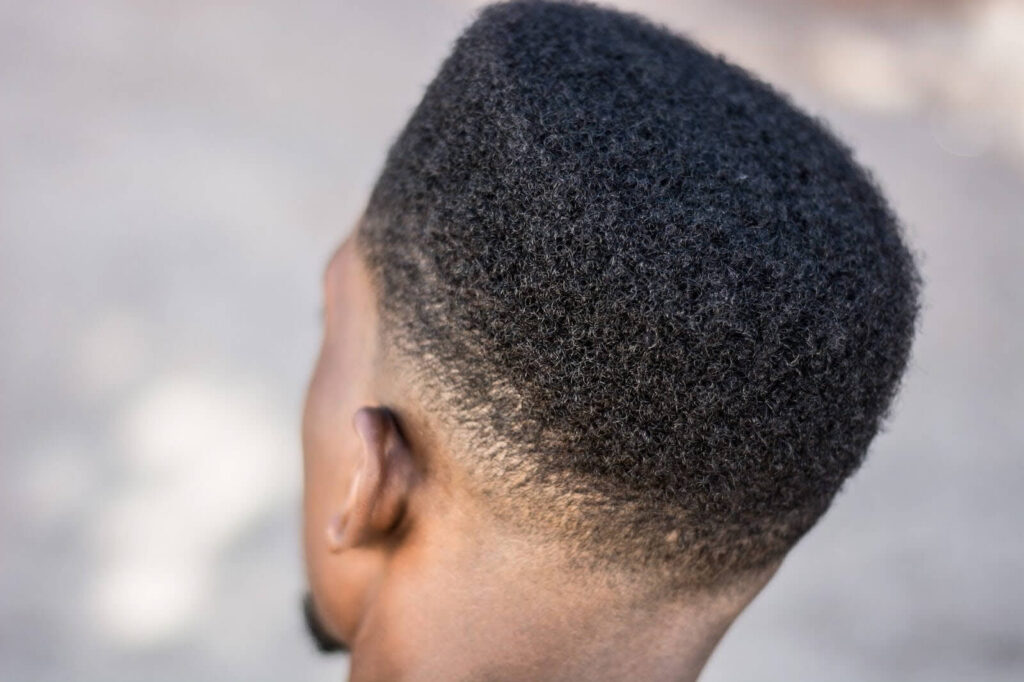Perhaps you’ve just had your hair transplant surgery. Or, for that matter, a beard transplant. Maybe you’re still in the stage of researching hair restoration methods such as NeoGraft to decide where and when to have it. Either way, you might benefit from some of our tried and tested Nashville Hair Doctor tips to help prevent swelling after hair transplant surgery.
Why to Expect Swelling After a Hair Transplant
Even though modern-day hair restoration is minimally-invasive and therefore easy on your body, it is still a surgical procedure. There is always the risk of swelling after you have surgery, even if it’s as hassle-free as NeoGraft.
Post-hair transplant swelling occurs when the hair follicles are extracted from one area of the scalp and implanted into another, causing surrounding tissues to become temporarily inflamed. Although this may be concerning, it is common, typically harmless, and will usually go away within a few days. And the good news is that you can take a few simple steps to make the best of your hair transplant surgery.
How to Reduce Swelling After a Hair Transplant
The following are our top five tips to prevent swelling, put together by Shauna, our NeoGraft Consultant at Nashville Hair Doctor:
#1: Pull Out the Recliner
“Sleeping in a recliner is my #1 recommendation for two reasons:” says Shauna. “Elevation and safety.” You should try to sleep elevated for the first 7 days to prevent swelling on your scalp, your forehead, even your eyes. And it will help you avoid inadvertently damaging your newly implanted grafts. The ideal time might vary from patient to patient, but Shauna likes to recommend seven days to be on the safe side.
“Sleeping in a recliner is my #1 recommendation.”
Shauna, Medical Consultant at Nashville Hair Doctor
The recliner will be your best friend to help prevent swelling after hair transplant surgery, because it allows you to stay elevated while keeping you in a safe position while sleeping. You DON’T want to toss and turn, sleep on your tummy or your side, or rub your hairline against the pillows.
If you don’t own a recliner, don’t fret. (Although this might be a great excuse to finally buy that La-Z-Boy you’ve always wanted!) You probably know someone you can borrow one from. “I’ve had many patients borrow a recliner from a family member or friend,” says Shauna. “But if you don’t know anyone who has one, then the couch is your next best option.” Sleep with a pillow on the arm rest of the couch. This will provide elevation and reduce the probability that you will turn to your abdomen.
#2: Take the Drugs
After their hair transplant surgery, Nashville Hair Doctor patients are given a 5-day steroid pack, which greatly helps to reduce swelling. “We didn’t follow this protocol in the first few years and patients always had some swelling,” recalls Shauna. Since implementing this 5-day pack, she says, it has been very rare that a patient deals with any swelling.
#3: Hydrate!
Shauna has just one word here: “Water!” Actually, she has a few more: “Lots and LOTS of water! Chug, chug, chuggggg!”
Seriously, drinking water and hydrating well is something you should be doing anyway. Whether you’re preparing for a marathon in July or just sitting on your couch watching World Cup soccer, keeping well hydrated is never a bad idea. Your skin will thank you for it, and your kidneys – and you might just feel a teensy little less hungry when filling up with water, so your waistline and wardrobe might thank you too!
#4: Bring on the Pineapple
Yes, you’ve read it correctly: Fresh pineapple is your best friend to help prevent swelling after hair transplant surgery, according to Shauna. If you don’t trust yourself with a knife and that prickly skin, check out the produce section of your grocery store. Most have a shelf with fresh pineapple nicely peeled and cored, ready to eat.
“But why pineapple, for the love of Pete,” you might say. Well, most people don’t know this, but pineapple contains a great, NATURAL, anti-inflammatory that can truly help in preventing those puffy eyes in the morning! Shauna recommends eating some in the morning and then again by mid-afternoon.
#5: Ice It!
When swelling does occur after hair transplant surgery, it’s usually on the 3rd of 4th day after your procedure. As everyone knows, ice is a very powerful anti-swelling agent. But you need to be careful where you place it! Applying an ice pack or frozen bag of peas just above your brows, but not on the transplanted site, can be a great preventative measure.
If you do happen to have a little swelling after following all of the above tips, you definitely want to apply ice IMMEDIATELY. Catching it in the earliest stage is best. You may apply your ice pack for up to 10 minutes every hour.
When to Seek Help: Signs That Swelling May Indicate a Complication
Although swelling after hair transplant surgery is usually not a cause for concern, it’s important to know signs that may indicate a complication. If you notice any of the following symptoms, please contact your hair restoration clinic immediately:
- Persistent or severe swelling: While most swelling subsides within a week, any swelling that persists or worsens beyond this period could indicate an issue.
- Fever or redness: If the swelling is associated with fever, increased redness, or warmth around the transplanted area, this could be a sign of an infection that requires medical attention.
- Pain that doesn’t improve: Some discomfort is normal after the procedure, but if the pain intensifies or doesn’t improve with prescribed medications, it’s time to contact our specialists for advice.
We hope that you find these tips useful as you recover from your hair transplant surgery. We also hope you’re not a pineapple hater, but if it’s not your favorite fruit in the world, don’t fret, we’ll let you skip it for… another glass of water!
So, after you’ve had your hair transplant surgery, fill up your water bottle. (Once you’ve waited 48 hours, we’ll even let you have a beer.) Next, settle into your recliner – for once, it won’t be because you’re in trouble! Then tune in to your favorite football game, or, for that matter, your favorite cooking show, and let those little hair grafts do their amazing work of growing where they haven’t grown in some time.
For more information, contact Nashville Hair Doctor or request a FREE quote.

